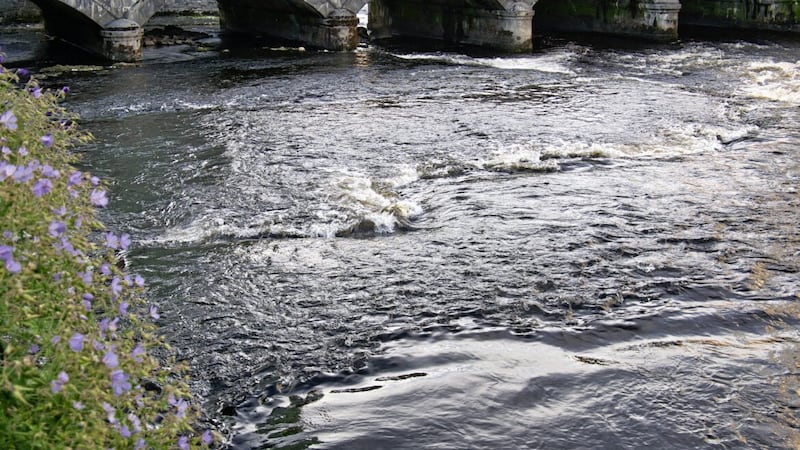A recent visit to the vibrant town of Sligo provided an opportunity to enjoy some of the wildlife around the Garavogue river, as it winds its way through the town on its final sprint towards Sligo Bay and the Atlantic Ocean.
Coming from its birthplace, Lough Gill to the southeast, this lively river shapes the built and human environment of the town, where the many road and pedestrian bridges determine how people there live, work, and interact.
The Hyde Bridge, close to the town centre is probably one of the busiest crossings, offering great views of the river's tumbling waters and some of the varied birdlife, like the dipper and mallard ducks I saw.
The original name for the river, found in medieval texts, is the Sligeach, 'a shelly place', coming from the Old Irish word, 'slice', or 'shell', a reference to the historic abundance of shellfish in the surrounding waters of the town, giving the name to both town and county.
The origin of the modern name, Garavogue, is less clear, but its Irish, An Gharbhóg gives us a clue with 'garbh' meaning rough or gritty, pointing possibly towards a 'gritty river' (Logainm.ie).
Linked to this interpretation is the mythical story suggesting the river takes its name from a local landscape goddess who is said to have created several cairns and megaliths by dropping stones on surrounding peaks of the Ox Mountains. This hag or Cailleach named Garavogue, is reputed to have lived in one of these chambers with the exiled mad King Sweeney, who lived a life of wandering across Ireland.
Observing the dipper, initially under the bridge and then working its way up and down a short stretch of the river, I reflected on how well adapted this bird is for living and foraging along the Garavogue.
Its short-tailed, squat stature enables it to swim under water and probe through stones for insects against strong currents and turbulent water, helped by a special eye membrane which protects its eyes when submerged.
The bird's bobbing stance, while standing on rocks reveals its overall brown plumage and distinctive white throat and chest bib. Slightly smaller than the blackbird, it is appropriately named Lon abhann in Irish, the river blackbird.
The dipper's flight path along the river is unmistakable, low, and direct over the water surface following the contours, until it lands again. Our Irish dipper, Cinclus cinclus hibernicus, is a subspecies which can be distinguished from its British counterpart by having a narrower rusty brown band below the bib on the breast.
Seeing this bird is always a treat, especially as we know it to be an excellent bio-indicator of the health of our rivers and streams.
As well as the dipper, I encountered another familiar bird of fast flowing water, the grey wagtail, flitting busily with its yellow belly and long flicking tail.
Mallards also gathered in shallower water joined by seagulls of varying ages at the Quay Street car park slipway, all hoping for some morsels of food from human hands, while never far away was the black headed gull, with its signature 'chocolate brown' head and characteristic laughing call.
Returning to the lore surrounding the Garavogue's name, the story goes that the Cailleach and her new friend mad Sweeney shapeshifted into the form of geese and dived to the bottom of the nearby lake, known as Loch Dá Gé (Ghedh), the Lake of the Two Geese (Heritage Centre Cliffoney).
Whatever its origins, I was pleased to reacquaint myself with the Garavogue, as it continues to enchant visitors with its history, wildlife and dominant presence through the town.








